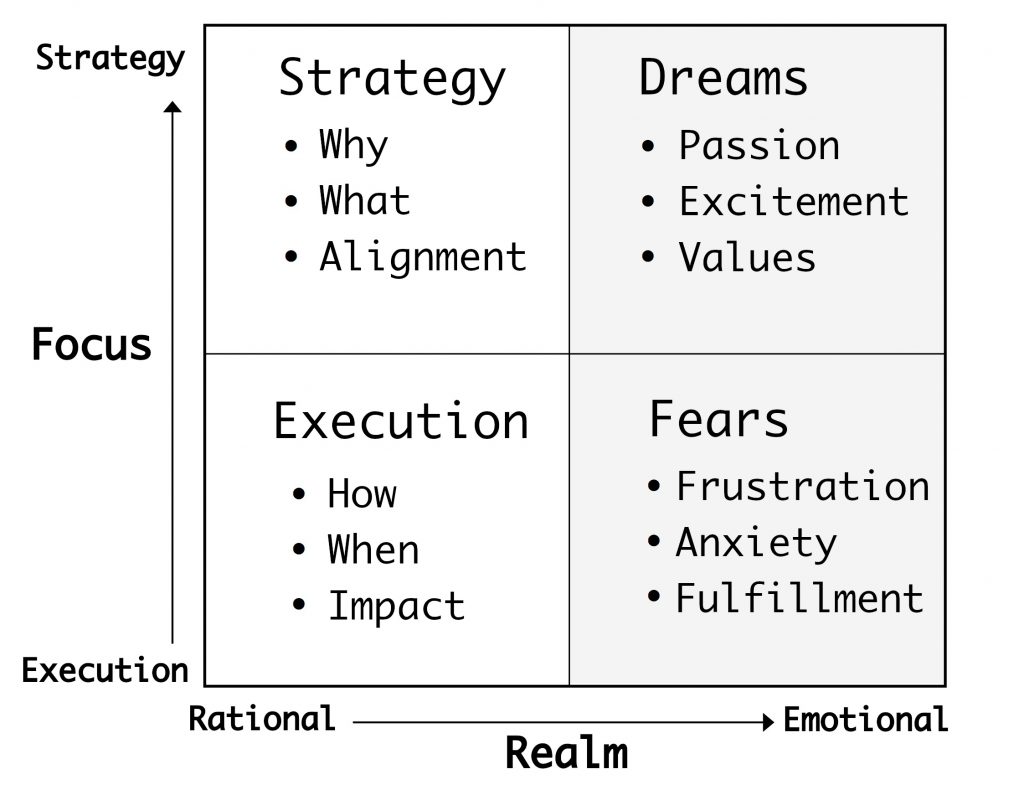GIGO – “Garbage in, garbage out,” is a popular truth, often said in relation to computer systems: if you put the wrong information in, you’ll get the wrong information out. The same principle applies to communications in general: if you ask the wrong questions, you’ll probably get the wrong answer, or at least not quite what you’re hoping for.
Questions open the door to dialogue and discovery. They are an invitation to creativity and breakthrough thinking. Questions can lead to movement and action on key issues; by generating creative insights, they can ignite change.
If asking good questions is so critical, why don’t most of us spend more of our time and energy on discovering and framing them?
Types of Questions
Questioning skills help you gather more quality information, help you learn a lot by questioning, helps others learn, helps build better relationships and helps to manage problems and people effectively. There are many types of questions that can be used for questioning techniques.
Open and Closed Questions
Closed questions generally invite a one-word answer, such as “yes” or “no”. For example, “do you drive?” or, “did you take my pen?” They could also include answers to factual or multiple choice questions, such as “what’s your name”, or “would you like tea, coffee, or water?”
Open-ended questions require a little more thought and generally encourage wider discussion and elaboration. They can’t be answered with a simple yes or no response. For example: “what do you think of your boss?” Or “why did you choose that car?”
While closed questions are useful for warming up a group discussion or to get a quick answer, open questions are very useful for critical and creative discussion as well as for gathering more information on a topic.
Funnel Questions
As with a funnel, these questions begin broadly before narrowing to a specific point. This type of questioning technique is used by investigators, researchers and detectives. In cases where investigations are involved, these types of questions can be used to gather information and then to narrow down to arrive at a decision. You can use a lot of closed questions at the start and then widen on to asking open questions thereby making the people feel comfortable answering your questions.
Probing Questions
Probing questions are used to gather more details and information. These are asked to clarify doubts or misunderstandings. These questions will help you pull out information from people who are hiding information or avoiding from telling you something.
Leading Questions
These questions are designed to lead the respondent towards a certain desired positive or negative route.
In the workplace, you might encounter leading questions such as: “do you have any issues with the project?”, or “did you enjoy working on that project?” The former subtly prompts the respondent towards a negative response; the latter towards a positive. Asking “how did you get on with that project” will get you a more balanced answer.
Leading questions could also involve an appeal at the end that’s designed to coerce the respondent into agreeing with the speaker. For example, “this project is going well, isn’t it?” encourages the respondent to say “yes”. This works particularly well because psychologically, we prefer saying yes over no. So when we’re put on the spot, we’ll usually opt for the former.
A word of warning: It’s important to use leading questions carefully; they can be seen as an unfair way of getting the answer you want.
Rhetorical Questions
These are a different beast altogether because they don’t really require an answer. They’re simply statements phrased as questions to make the conversation more engaging for the listener, who is drawn into agreeing with you. For example, “isn’t it nice working with such a friendly team?” is more engaging than “this team is friendly’” which doesn’t require any mental participation from the respondent.
Rhetorical questions are often used by coaches or public speakers for effect to get the audience thinking and agreeing. In this way, they’re a not-too-distant cousin of the leading question.
The Power Questions Matrix
One helpful way of identifying the different types of questions you should be asking is to think about two key dimensions.
- First, are you focusing on goals and strategy – the big picture – or on implementation and execution?
- Second, are you in the realm of the intellect or of the emotions?
If we combine these two dimensions we get four quadrants.

In the lower left quadrant, we’ll ask rational or analytical questions about execution: “How are you going to do that” or “What is your timing?” or “How will that initiative impact your ability to stay close to your customers?” and so on.
In the upper left quadrant, we’re still focused on rational or analytical questions, but now we’re talking about strategy or the big picture. We might ask questions to get at higher-level goals: “Why do you want to do that?” or “What are your most important priorities for this year?” or “What is the business goal driving this program?”
But remember, facts tell and emotions sell. You must also understand the emotional or personal side of the issue. So in the upper right quadrant we might ask questions like, “As you look ahead to the next couple of years, and the various initiatives you have underway, what are you most excited about?” You see, the same question in the upper right quadrant – which is on the analytical side of the matrix – might sound like “What are your most important goals for this year?” The former will yield a very different – and more heartfelt – response than the latter.
Finally, in the lower right quadrant we need to ask questions about fears, anxieties, and frustrations; as well as about personal fit and fulfillment. For example, “What parts of your implementation program have been most frustrating?” or on a personal level, “What part of your job is most fulfilling to you?”
In your next conversation pay special attention to the two right-hand quadrants, where you ask questions in the emotional realm. You’ll be surprised at how interesting the conversation becomes when you move from the left, analytical brain to the right brain.
What is a powerful question?
You have probably used all of these questioning techniques before in your everyday life, at work and at home. But by consciously applying the appropriate kind of questioning, you can gain the information, response or outcome that you want even more effectively. However there is no script for asking a powerful question. Powerful questions evoke clarity, create greater possibility, reveal new learning and generate action.
Here are a few ways to determine if a question is powerful or not.
A powerful question …
- is open-ended: Ask what, when or how instead of asking a yes or no question.
- comes from a beginner’s mindset: Start by telling yourself, “I don’t know the answer.”
- is clear and succinct: Keep it simple, don’t use too many words.
- is impactful: It’s important to remember that not every question in a conversation should be powerful. In a 30-minute conversation, aim for 2-3 powerful questions.
- happens in the moment: Here is probably the most crucial point to remember about powerful questioning. You can’t plan it! Formulaic questions outlined before the conversation won’t work. You have to be in the moment.
The ability to ask powerful questions is dependent on your curiosity. Ask questions with a beginners mind; with a natural curiosity and an eagerness to learn more.
The next time you feel compelled to quickly jump in with ideas and suggestions, first get truly curious. Ask questions without an attachment to the answer. This will help you uncover the real issue, and can also help someone develop her own insight. Here are some powerful questions to get you going.
Build understanding. Questions to uncover what is important:
- What challenges are you facing?
- What matters to you right now?
- What’s on your mind today?
- What opportunities are you seeing?
Set direction. Questions to shift focus from what’s wrong to what’s possible:
- What is the best possible outcome?
- What are you trying to achieve?
- What do you want to happen next?
- What does success look like?
- How will you know if you’ve succeeded?
Shape options. Questions to generate ideas:
- What have you tried?
- What options do you have?
- How possible is each option?
- What would you have to believe for this option to be right?
Define next actions. Questions to clarify what should happen next:
- What data/information do you need to make a decision?
- What action can you take now?
- What are you taking away from this conversation, as a next step or new way of thinking?
- What support do you need? Where will you get it?
- How can I help?
Black Stories
Black Stories are fiddly, morbid and mysterious riddles in which the players have to reconstruct the crime by asking, guessing and fiddling about. However it comes with a twist as the players are only allowed to ask yes or no questions to the game master to get more information on the crime.
Why are Black Stories so unique? – What makes them so useful in a testing environment?
The reason is obvious and you can validate it by a simple experiment when playing Black Stories next time: For one Black Story take notes about the suggestions and questions thrown on the table.
When solving a creepy riddle the players come up with solution proposals from several different perspectives. The suggestions made necessarily are not related to each other nor a logical consequence. Merely, the players follow an indirect and creative approach. They throw ideas on the table that may not be obtainable by using only traditional step-by-step logic. They jump from one option to a totally different by random – only guided by the more or less illustrative or cryptic hints of the narrator.
This game helps to spark creativity, to make people think out of the box, to nudge lateral thinking, learn people to ask the right questions, and, and, and…
Conclusion
Powerful questions are the only ones that will get the conversation to where it should go, providing solutions and helping everyone involved move forward with increased vigor and excitement about the current task or project.
To be able to evaluate people, teams or situations with greater fidelity, go back to the curious part of you that wants to explore. Instead of restricting yourself, open yourself up and allow your mind to ask any question. Allow yourself to ask the powerful questions. You already have them in you.

